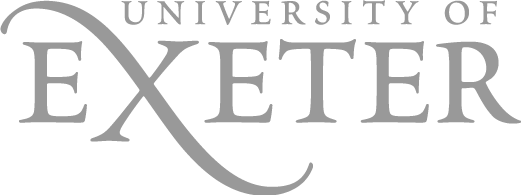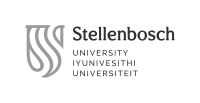S2419 Urban Linguistic Landscapes
Professors
Schedule
Course description
This course focuses on the growing interdisciplinary field of Linguistic Landscapes (LL) research, which traditionally analyses “language of public road signs, advertising billboards, street names, place names, commercial shop signs, and public signs on government buildings”, usually as they occur in urban spaces (Landry and Bourhis, 1997; Shohamy and Gorter, 2009). More recently, LL research has evolved beyond studying only verbal signs into the realm of semiotics (Shohamy 2018; Gorter 2018), thus extending the analytical scope into the multimodal domain of images, sounds, drawings, movements, visuals, graffiti, tattoos, colours, smells as well as people. This has led to a broader definition of LLs as “Interaction of discursive modalities with visual images, nonverbal communication, architecture and the built environment” (Jaworski & Thurlow 2010: 2).
This course focuses on multiple aspects of modern LL research including an overview of different types of verbal and non-verbal (graffiti, objects, architecture, …) signs, their formal and functional features as well as their realization in an urban Linguistic Landscape (Auer 2010; Gorter 2018). In the empirical track throughout this course, case studies of Linguistic Landscapes in different cities throughout the world will be discussed, for example for Venice (Tufi 2017), Strasbourg (Bogatto & Hélot 2010), Brunei (Coluzzi 2016), Tel Aviv (Shohamy, E., Ben-Rafael, E., & Barni 2010) and Oman (Buckingham 2015). Also, theoretical views as well as findings from existing case studies will be empirically elaborated and examined by the students through pair- or groupwise explorations of the Linguistic Landscape in parts of Venice. The findings of the different groups will be discussed and compared in the plenary group.
In the setting of VIU, special attention is paid to the analysis of the Linguistic Landscape of Venice, thus adding observations to the earlier study by Tufi (20217). Venice is a city in constant need of finding a balance between citizens, cultural heritage and tourists. One of the elements meant for finding that balance is the release by the city of Venice of 12 “Good rules for the responsible visitor” (#EnjoyRespectVenezia). Through this initiative (visible in the LL of the city), the city actively participates in the process of interactional urban meaning making. Some of these rules [emphasis original] explicitly pertain to the impact of materialities and architecture on interaction, as in rule #6 ‘Walk on the right, do not stand at any time on bridges, do not even lead bikes by hand’, or #7 ‘Steps of churches, bridges, wells, monuments and banks of streams, canals etc. are not picnic areas. Please use the public gardens for this necessity. Consult the map’ or #8 ‘St. Mark's Square is a monumental site and excluding pertinent bars and restaurants, it is forbidden to stand at any time in order to consume food or drink’ etc. In this course, we will further scrutinize the communication of these guidelines as part of the dynamic Linguistic Landscape of Venice
(see: https://www.comune.venezia.it/en/content/buone-pratiche-il-visitatore-responsabile).
Learning outcomes of the course
This course aims:
- to familiarize students with the standard tools and concepts required for collecting, annotating and analyzing data in Linguistic Landscapes research
- to make students familiar with the latest LL scholarship
- to enable students to carry out and present LL research in situ in Venice;
- to make students aware of social, economic and political issues such as diversity, racism and discrimination, in- and exclusion, activism and glocal controversies, ideologies and justice, sexual identity, gender equality, etc.;
- to introduce students to discourses and research on LL impacting the cultural profile of our cities (and Venice in particular) and affecting the way we interact with the urban environment
- to enable students to apply interdisciplinary LL approaches.
Teaching and evaluation methods
As far as teaching is concerned, this course will mix both theoretical and practical activities, with a clear increase of the latter towards the end of the semester. Students will be asked to conduct small-scale exploratory studies of the LL in certain parts of Venice (pair- or groupwise) and to report and compare their findings in the plenary class group. These reports will take the form of a brief, documented (pictures, videos) presentation followed by a Q&A-session and a general discussion.
Finally, students are expected to hand in a written ‘empirical report’ (between 2000 and 2500 words), in which they document and reflect on aspects of the LL of Venice.
Evaluation
- Interaction & involvement (discussion, feedback, …) (20%)
- Preparation of small assignments, tasks & exercises (10%)
- Oral presentations (30%)
- Empirical report (40%)
Bibliography
Bonadio, E. (2014). Graffiti copyright battles pitch artists against advertisers. The Conversation.
François Bogatto & Christine Hélot (2010). Linguistic Landscape and Language Diversity in Strasbourg: The « Quartier Gare » In Elana Shohamy, Eliezer Ben-Rafael & Monica Barni (Eds.). Linguistic Landscape In The City. Bristol: Multilingual Matters, 275-291
Louisa Buckingham (2015). Commercial signage and the linguistic landscape of Oman. World Englishes, 2015 0883-2919 doi: 10.1111/weng.12146
Paolo Coluzzi (2016). The linguistic landscape of Brunei. World Englishes, 497–508.
Day, D., Wagner, J., (2015). Objects as tools for talk. In: Nevile, M., Haddington, P., Heinemann, T., Rauniomaa, M. (Eds.), Interacting with Objects. Language, Materiality and Social Activity, 101-124. Amsterdam: Benjamins.
Gorter, D. (2018): Methods and Techniques for Linguistic Landscape Research: About Definitions, Core Issues and Technological Innovations. In: Pütz, Martin & Neele-Frederike Mundt (eds.). Expanding the Linguistic Landscape: Linguistic Diversity, Multimodality and the Use of Space as a Semiotic Resource. Channel View Publications, 38-57
Hodge, R. & Kress, G. (1988). Social Semiotics. New York: Cornell University Press.
Jaworski, A. & C. Thurlow (2010). Introducing Semiotic Landscapes. In: Jaworski, Adam & Crispin Thurlow. Semiotic Landscapes - Language, Image and Space. London: Continuum Books, 1-23
Mondada, L. (2019). Contemporary issues in conversation analysis: Embodiment and materiality, multimodality and multisensoriality in social interaction. Journal of Pragmatics 145, 47-62.
Shohamy, E. (2018): Linguistic Landscape after a Decade: An Overview of Themes, Debates and Future Directions in LL research. In: Pütz, Martin & Neele-Frederike Mundt (eds.). Expanding the Linguistic Landscape: Linguistic Diversity, Multimodality and the Use of Space as a Semiotic Resource. Channel View Publications, 25-37.
Shohamy, E., Ben-Rafael, E., & Barni, M. (2010). Linguistic landscape in the city. Channel View Publications
Sonesson, G. (2010). Pictorial semiotics. T.A. Seboeot & M. Danesi (eds.), Encyclopedic dictionary of semiotics (third revised and updated edition). Berlin: Mouton De Gruyter.
Sonesson, G. (2013). New Rules for the Spaces of Urbanity. International Journal for the Semiotics of Law 27(1). 7-26.
Stampoulidis, G. (2016). Rethinking Athens as Text: The Linguistic Context of Athenian Graffiti during the Crisis. Journal of Language Works. 1-14.
Stefania Tufi, S. (2017). Liminality, heterotopic sites, and the linguistic landscape. The case of Venice. Linguistic Landscape, 78-99.
Last update: January 22, 2024


















